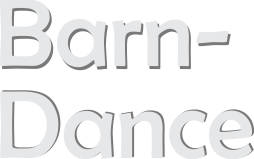
Since the time of its inception, dances have always been a means for social gatherings and celebrations. However, as centuries passed, some of these dances developed as a narration to the historic events and mythological stories. The basic intention of dance of bringing people together started losing its significance. However, the dance that still holds the honour of living the same intention as it did hundreds of years ago is the Barn Dance. Barn Dancing enables a group, family or community to socialize and celebrate. One can relate the term ‘barn dance’ with family–oriented or community–oriented events, even for those who do not dance. The caller of the dance performs such easy steps for everybody to join in. Today, more often referred to as the country line dancing, the Barn dance involves traditional or folk music where the people dance traditionally in the barn. Let us further discuss about this dance.
Despite the athletic appearance of Barn dancing today, its roots can be traced to the courtly dances held by the land owning gentry hundreds of years back. It has been estimated that the Barn Dance originated in England and Scotland in the 1860s, an era when peasants went to open areas in a barn to imitate dancing of the wealthy landowners. Since those times, Barn dances were held to celebrate the raising of a new barn, a holiday, birthday, wedding or a celebration. Barn dances were considered as an important social event because the entire town was invited to attend the dance. Barn dance is often referred to as Ceilidh, traditionally Irish or Scottish and hence, also features Square dancing, Contra dancing, English Country Dance and line dancing.
It was since the 19thcentury that the peasants held Barn dances imitating the line dances that were held in the upper–class ballrooms. In the 17th century, English professional dancers performed the Morris Dance in an exhibition in two lines. This heavily influenced the courtly dancing of those times. Consequently, Barn dancing also got influenced since those times, about hundreds of years ago.
The United States started Barn dancing, Square dancing and circle dancing when European immigrants brought European traditions with them to the world. The version of these courtly dances was much rowdier as few of the peasants already knew the correct steps. Hence, the position of the caller was created by the communities. According to the position, the caller’s job was call out the correct steps and organize the dance in such a fashion that they all dance. Even after many years, this trend is still prevalent in a developed way where the caller uses a megaphone to choreograph large number of barn dancers. In addition to this, the WLS (an AM radio station) is credited in developing the radio format for the Barn dance. It began with George D.Hay’s old–time fiddling program on 19th April, 1924 as the host and announcer of the show. Later, dozens of similar programs appeared on the AM stations across US, Los Angeles and many other places.
G Kowledge of | 0 Comments >>
0 Comments
Leave Comment
Your email address will not be published. Required fields are marked.